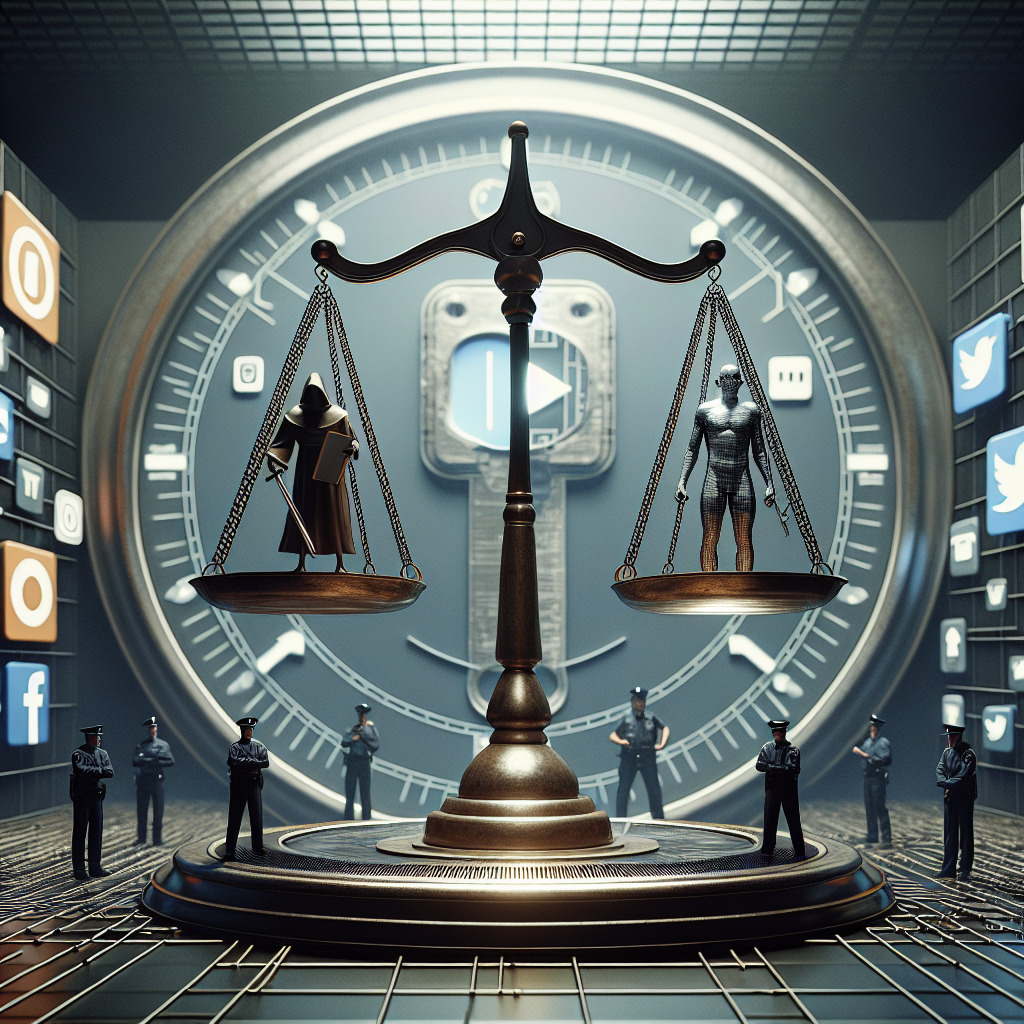Key Takeaways
The Growing Pressure on Social Media Platforms
In today’s digital age, social media platforms have become integral to our daily lives, offering avenues for communication, expression, and information sharing. However, these platforms have also become hotbeds for illegal content, ranging from hate speech and terrorism propaganda to copyright infringements and fake news. Governments and regulatory bodies worldwide are increasingly concerned about the spread of such content, presenting social media firms with an ultimatum: curb illegal content effectively, or face dire consequences.
Understanding the Challenge
The challenge of moderating illegal content on social media is multifaceted. On the one hand, platforms must ensure they do not impede on users’ freedom of speech, a fundamental component of democratic societies. On the other hand, they must prevent their platforms from becoming breeding grounds for harmful and unlawful content. This balance is challenging to maintain, and traditional moderation methods often falter under the vast quantities of content uploaded every second.
Regulatory Pressure and Potential Penalties
As the scrutiny of social media platforms intensifies, many governments are proposing stringent regulations that require immediate attention. Failure to comply could result in severe penalties, including substantial fines or, in extreme cases, restrictions on operating within certain jurisdictions. For instance, the European Union’s Digital Services Act seeks to hold platforms accountable for their content, demanding transparency and proactive measures to prevent the spread of illegal material.
The Role of Technology in Compliance
To address these challenges, many social media companies are turning to technological solutions. Artificial intelligence (AI) and machine learning are being deployed to identify and remove harmful content quickly. These technologies can help flag potential violations for human review, improving the efficiency of content moderation. However, they are not infallible and can sometimes lead to the removal of legitimate content or the overlooking of harmful material.
AI and Machine Learning Benefits
– **Efficiency**: AI can process vast amounts of data faster than any human moderator could.
– **Scalability**: As platforms grow, AI systems can be scaled up to handle increasing content volumes.
– **Pattern Recognition**: Machine learning models can identify patterns in illegal content, enhancing detection capabilities.
Balancing Privacy and Content Regulation
Another major concern when tackling illegal content is ensuring user privacy remains intact. Many users fear that increased moderation could lead to surveillance and invasion of privacy. Social media firms must reassure users that their data is safe and that moderation practices are not intrusive. Implementing clear policies and maintaining transparency about how data is used and how moderation decisions are made can help assuage these concerns.
Transparency as a Key Element
To build trust, social media platforms should:
– **Publish Moderation Policies**: Clearly outline what constitutes illegal content and how it is identified and removed.
– **Offer Appeal Processes**: Users should have a way to contest content removal or account suspensions.
– **Report Regular Updates**: Share statistics on removed content and account actions to demonstrate commitment to compliance.
Collaboration with Governments and Organizations
Effective regulation of illegal content often requires a collaborative approach. Social media platforms can work with governments, non-profit organizations, and other stakeholders to develop industry-wide standards and best practices for moderation. This collaboration can also extend to sharing data and resources to improve detection and response times for illegal content.
Global Standardization Efforts
Some of the benefits of global collaboration include:
– **Consistency**: Unified standards across platforms can create a predictable and fair moderation environment.
– **Resource Sharing**: Sharing tools and methodologies can improve the overall efficiency of content moderation across the industry.
– **Cultural Sensitivity**: Working with local organizations can help platforms understand cultural contexts and nuances, enhancing moderation efforts.
Looking Ahead
The ultimatum faced by social media platforms to curb illegal content effectively is a call to action for the industry to innovate and adapt. By leveraging cutting-edge technology, ensuring user privacy, and engaging in collaborative efforts, platforms can rise to meet regulatory demands while maintaining user trust and freedom of speech. The road ahead will require vigilance, transparency, and a willingness to evolve alongside the ever-changing digital landscape.
As social media continues to play a critical role in our lives, finding the right balance between moderation and freedom will be essential for a safer, more respectful online environment. Social media platforms must not only recognize the gravity of their responsibilities but also embrace the potential of technology to foster positive changes.

